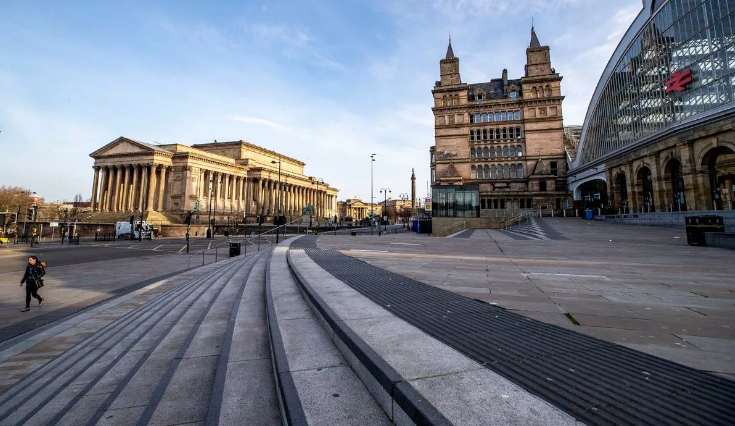Each Liverpool street has a separate history, a separate architectural ensemble, its own character and colour. Their names indicated what or who the British valued in a specific period, who they considered a hero and which of the residents distinguished themselves by their achievements. Learn more about it at liverpool-future.
Famous old streets (the most interesting naming stories)
Many of Liverpool streets are known around the world and they hint us about their origin. The most famous ones include Scotland Road, Bold Street, Penny Lane and others. Some streets’ names refer to prominent figures of the past. They may be unknown by posterity and even their fields of activity may have disappeared… However, these names are worth remembering in the context of history as a science because there is no future if we don’t know our past.
Penny Lane. This street was made famous by The Beatles. However, the versions regarding the origin of its name differ. According to one of them, it was named after the Liverpool slave owner and anti-abolitionist James Penny. If the version is correct, this is only one of the many names of Liverpool architectural objects associated with slave owners. Some activists opposed naming streets after such people and even defaced road signs with graffiti.

Still, there are other versions. One of them claims that Penny Lane has been named after a group of fields called Penketh, which translates as the edge of the wood, and has been formerly known as Pennies Lane. Another guess is that it may be related to the toll that was once charged for the use of the road (so, the name came from the monetary unit).
Brunswick Road. Apparently, this street was named in honour of Caroline of Brunswick, who gained more fame than her husband, King George IV. The legend said that when a person who painted road signs left his workplace, a Queen’s supporter wrote Brunswick Place on one of the signs. Believing that it was an official name, the painter copied it. Later, the word Place was changed to Road.
The Folly becomes the Square
Falkner Street and Falkner Square. All researchers agree that Falkner Street and Square were named after Edward Falkner, a Lancashire soldier and sheriff who, according to history, mustered 1,000 men in an hour to defend the city against a French invasion in the late 18th century. In 1835, the square was one of the first open public places. However, the houses here were built on swampy land, so many of them remained empty. Buyers were afraid that the houses would simply sink. The district was also located far outside the city, which didn’t add to its popularity. Therefore, people called the square Falkner’s Folly. Later, Folly was changed to Square.
Lime and railway, what is the connection?
Lime Street. It is one of Liverpool’s main thoroughfares, once known as Limekiln Lane. Later, the name was shortened. It originates from the limestone kilns that were on the site of the modern railway station. They were closed when doctors from a nearby hospital started complaining about the smoke, which was very harmful to their patients and nullified the treatment. The furnaces were relocated, but the mentioned railway station got the name.

Liverpool streets and names of historical figures
A lot of Liverpool streets bear the names of famous historical figures, politicians, soldiers and doctors. But who are they exactly?
Clarence Street is associated with the Duke of Clarence, later King William IV. He opposed the abolition of slavery and was quite a controversial speaker. His speeches in the House of Lords often caused disputes and his views were unpopular. He visited Liverpool in 1790, just when the street named after him was being laid. He was popular at the time because he supported the slave trade, which brought the city huge profits.
Wellington Road is named after the Duke of Wellington, who fought in the wars against Napoleon and commanded the Allied forces at the Battle of Waterloo. There is also a memorial to his honour at the top of William Brown Street.
Nelson Street. This street also bears the name of the hero of the Napoleonic Wars, but his victories are mostly associated with naval battles. Horatio Nelson supported the slave trade too and highly valued Britain’s possessions in the West Indies, stressing that he would fight for them as long as he had arms.
Utting Avenue. Professor Sir John Utting was Mayor of Liverpool from 1917 to 1918, the first Professor of Anaesthetics at the University of Liverpool, the city’s Chief Medical Officer and the first club doctor of Liverpool Football Club.
Conclusion
As you can see, some pages of Liverpool’s history are dark or dubious. However, not all people who gave names to the city’s streets were bad. In addition, those people contributed to the development of the city and the region. Today, the names of the streets and their architecture remind us of those who were once considered heroes.